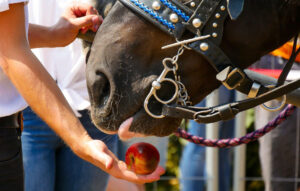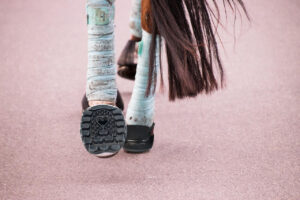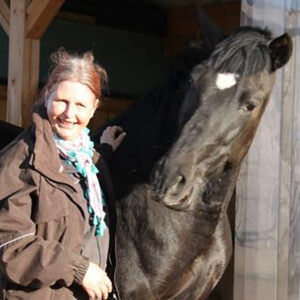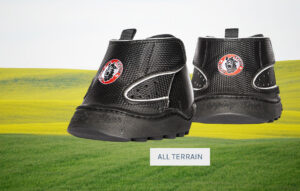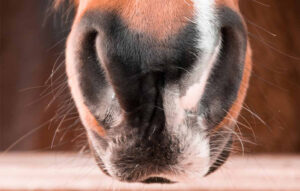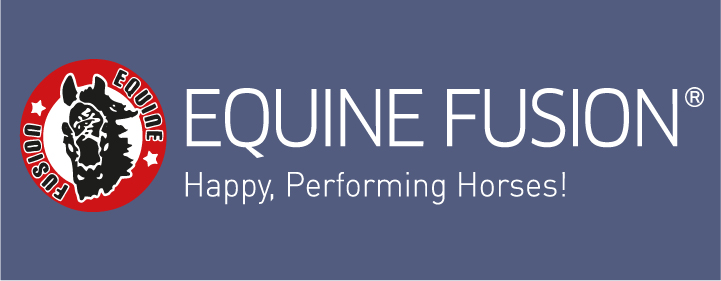In most cases, fractures of the coffin bone occur traumatically. Sudden forces (e.g. striking out against stall walls) or the blunt impact of the sole surface on uneven, hard ground, as well as stones, can cause the coffin bone to fracture. In this article, we’ll examine possible causes of leg fractures and learn how to tell if your horse has a problem. Finally, we’ll look at treatment options and the horse’s chances for a full recovery.
Hoof bone fracture in horse
A hoof bone fracture can happen to any horse, regardless of age. It often occurs in older horses as a result of atrophy (bone loss) of the coffin bone.
A fracture of part of the coffin bone or the sole edge of the coffin bone are often less painful and associated with less lameness. Due to the firm horn capsule the fragments usually remain in position. The two coffin bone branches are extensions of the coffin bone to the rear.
Possible causes and prevention
Fractures of the coffin bone occur more frequently and are usually associated with a rapid onset of massive lameness of the horse. A distinction is made between fissures and fractures. Fissures are fractures that look like a crack or split on x-ray and can be the cause of minimal lameness. Fractures, on the other hand, are clearly visible.
The coffin bone in the hoof is well protected by the horn capsule. Nevertheless, injuries can occur for instance by
- bruising on hard ground due to stumbling or slipping
- dropping of the hoof on hard ground
- jamming the hoof
- Hitting against a wall
- Hitting obstacles
- Very flat hooves
- Ball kick
- Slate shoeing
- Nail kick
- Nailing
- Unnatural bending

Typical symptoms
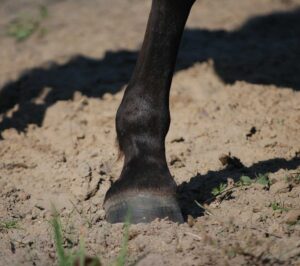
The horse will no longer load the hoof with the fracture. When tapping the hoof (percussion), the horse will show signs of pain. When palpating the metatarsal artery, it will show increased pulsation.
Confirmed diagnosis is made primarily by obtaining radiographs.
Fractures include sagittal or longitudinal fracture (common), chip or avulsion fracture, and coffin bone branch fracture.

Treatment
The therapy is treated conservatively by special shoeing and immobilization by plaster or special bandage. The duration for fractures of the coffin bone is approx. 1- 4 months. Regular control by means of X-ray highlights the healing progress. The cast must often remain on the hoof for 3-4 months.
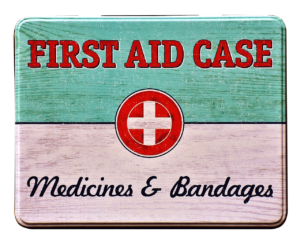
Recovery prospects and prognosis
The healing prospects of a coffin bone fracture always depend on the type of fracture. Fractures of the navicular bone, fractures of the coffin bone branch and sagittal fractures (longitudinal division without joint involvement) usually have a good prognosis.
A fracture of the coffin bone branch or the sole edge of the coffin bone is protected by the horn capsule around the hoof. The displacement of the bones is relatively rare.
The prognosis is worse with an open fracture. Comminuted fractures are also among the fractures with a more negative prognosis.
Fortifying the whole organism
Probably the simplest measure to ensure that your horse does not get sick is to fortify the horse, naturally. Our animals need good nerves and composure when dealing with us and the environment. But also in sports, competitions or at shows, calmness and composure paired with power, strength, energy and self-confidence bring great success.
Vita pro is a completely natural, liquid supplementary feed from nature’s treasure chest of valuable ingredients, developed for horses, dogs, cats and other animals, to provide a healthy and powerful portion of extra energy. However, Vita pro can do much more.
Vita pro has been used by dog, cat and horse owners for many years to support and improve the overall wellbeing of their animals and pets. Vita pro has been used for many years and has become a tried and trusted companion for horse owners and stable hands. Horses need daily good feed, fresh water, a clean stable with good air, plenty of light and exercise, as well as appropriate training and, if possible, a sensible supplementary feed.
Have your horse start the day full of zest for life, with Vita Pro



